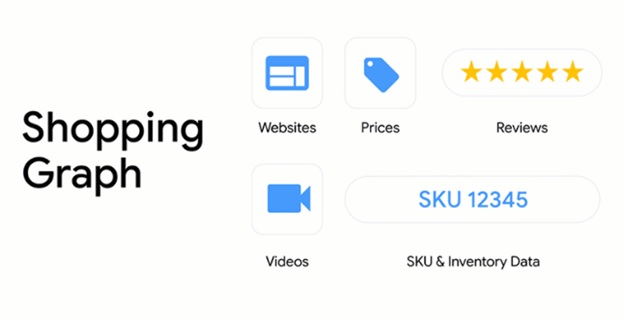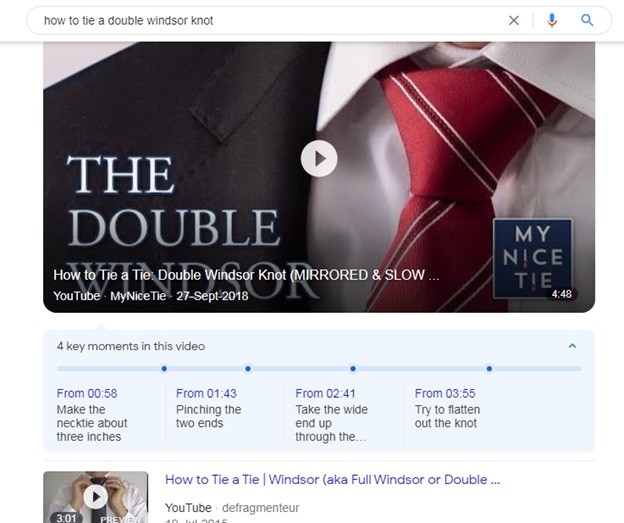Future SEO: Top 5 SEO Trends to Follow in 2022
Are you wondering how SEO will look like in 2022? For those looking for a short answer, SEO in 2022 will be more than just a marketing technique. The days when SEO pros optimized a page for keywords and built links to it to boost ranking on search engines like Google are gone!! Now, Google has come up with so many new updates and ranking algorithm enhancements that will reshape the future SEO in a way that traditional SEO strategies will no longer be as effective as they are.
If you are an SEO enthusiast or simply a website owner and wish to rank a website at the top, you can’t do much with a short answer. So, we have created this detailed guide to feed your curiosity with exciting, latest SEO trends that you must know about to redefine your SEO strategies in 2022.
SEO Trend #1 Optimize Content for Conversational and Multimodal Queries
Why? Google Algorithm Is Shifting from BERT to MUM!!
In 2019, Google launched BERT (Bidirectional Encoder Representations from Transformers) that changed the way it looked at user queries. It allowed Google to understand the relationship between words and the intent behind the query. As a result, SEO pros and content creators learned to shift their focus from optimizing and creating content with specific keywords to optimizing and developing content that can address the intent behind search queries.
What Change to Expect in 2022 in SEO Queries?
During the Google I/O 2021 Conference, Google proved that BERT was just the beginning as it announced a new model called Multitask Unified Model (MUM). According to Prabhakar Raghavan, Head of Search at Google, this new Natural Processing Model is said to be 1,000 times more powerful than BERT. How?
- MUM can analyze an ocean of data in more than 75 languages.
- MUM can understand the user’s feelings, abstractions, and the context in addition to the intent.
- MUM can understand multiple modalities. Meaning, it can easily interpret a query that contains an image and text, as well as an image and voice.
What does this (MUM launch) mean for users?
Users can now combine text, images, and voice in their queries to get more relevant results. For better understanding, take a look at the illustrations below shared by Google.

It’s amazing to see how easy it will become for users to find the information that they actually want.
What does this mean for SEO Pros?
For SEO practitioners and content developers, the launch of MUM will mean, in 2022, they should develop and optimize content not just for queries that contain either text or voice alone. They need to focus on providing and optimizing content that addresses real-life problems, conversational queries, voice search queries, and queries that combine all – voice, image, and/or text.
SEO Trend #2 Get Discovered through Google’s Shopping Graph
Why? Google has launched the Shopping Graph that supports businesses with an online presence and helps people discover, learn about, and shop for desired products.
While online shopping was already booming, the Covid-19 pandemic has spurred massive growth in the e-commerce sector. People of all ages are finding online shopping much easier and thus, turning to their mobile phones more than heading out to street markets, supermarkets, and malls.
Seeing the growing inclination of people toward online shopping, Google has come up with the Shopping Graph. This model works in real-time and hence, allows people to discover and shop for products that are available right now.
The Google Shopping Graph

The Shopping Graph is capable of doing so because it is exclusively designed to understand the evolving set of products, sellers, brands, reviews, product information, inventory data, and how all these attributes relate to each other.
Besides, Google has also partnered with Shopify that will allow 1.7 million merchants to feature their products across the Google ecosystem, including Google Search, Shopping, YouTube, and Google Images with just a few clicks.
That’s not all.
Google has also introduced:
- A new Chrome mobile feature where people can see their open carts when they open a new tab.
- A way through which brands can link their loyalty programs to their user’s accounts so that brands can connect with and reward their most loyal shoppers easily across the Google ecosystem.
- A new feature for the Shopping tab that shows the latest deals across brands and retailers for shopping-related keywords.
- Affordable Picks Carousel for mobile search queries that contain “cheap”.
What does the Shopping Graph mean for users?
With the launch of Shopping Graph, people will be able to shop more easily and wisely as they can discover products with ratings, prices, and current availability right on the search result page. Plus, it will be simpler to find affordable products.
What does the Shopping Graph mean for SEO practitioners?
In 2022, SEO practitioners will need to work with businesses more closely to create marketing campaigns, make them educated about why encouraging their customers to write reviews has become more important, how loyalty programs can help boost their revenue, and why they should mention the current stock availability and prices on their website.
Besides, SEO practitioners will need to focus more on highlighting and optimizing websites and content that talk about “latest deals”, “discount codes”, “discount coupons”, “cheap”, and “affordable” products and services.
On our end, we are eagerly waiting to see how e-commerce businesses will play these features in 2022.
SEO Trend #3 Passage Ranking Will Be a Part of SEO Strategy Too.
Why? Passage Indexing is a real thing now!
Since search engines came into existence, the highest priority goal of any SEO professional was to rank the page of a website at the top for relevant queries. But, later, Sponsored Ads, Maps, and Featured Snippets made things more difficult for SEO pros to rank pages at the top.
However, in February 2021, another feature of Google – “Passage Indexing” went live. While this is a small update and doesn’t need website owners to go crazy about making changes, its ripple effect will be seen more prominently in 2022.
Now, Google looks for some of the stronger signals about a page, such as page titles, headings, and subheadings to understand which passage is more relevant for a query. Even though there is not sufficient information about ranking a passage, Google recommends creating more insightful, useful, and relevant titles and headings in the content.
SEO Trend #4 Videos Will Become Mainstream!
Why? Google has introduced a Suggested Clips tab to take users directly to those moments in a video where they can get the answer to their queries directly.
With Suggested Clips, users don’t have to watch a video from the beginning as Google is doing the work of finding which part of a video contains the exact answer.
Google can now extract answers from videos no matter if they are uploaded on YouTube or your website. In fact, Google has launched two entirely new video structured data types, called Clip markup and Seek markup. These data types will allow you to define timestamps and labels to define key moments of your videos.

From being a nice-to-have part of an SEO strategy, videos will play a critical role in ranking competitive terms. Hence, the game of video creation and marketing is going to be more challenging and fun next year.
SEO Trend #5 Enhancing User Experience Using Core Web Vitals
Why? Page Speed and Page Experience Matter More for Users. So, they do matter for you!
Page speed and page experience are long-lasting trends. So, you should prepare yourself by understanding all those things that can improve the speed and experience of a page for users. If you fail to do so, your website might get lost among millions of websites that don’t appear anywhere among top results.
Though onsite optimization and link building are still relevant, they are not the only things of paramount importance.
According to Google, page experience refers to:
“a set of signals that evaluate how a user perceives the experience of interacting with a page beyond its pure information value”
By the end of August 2021, Google has finished making changes and rolling out the full update to its algorithm. To help SEO experts and website owners, it also shared three Core Web Vitals that help Google measure the page experience for a particular page.
These Core Web Vitals are:
- Largest Contentful Paint (LCP) – measures loading performance
- First Input Delay (FID) – measures interactivity
- Cumulative Layout Shift (CLS) – measures visual stability
- Largest Contentful Paint (LCP)
- It measures how long it takes for the largest element (or main content) on your page to load.
- You need to aim for an LCP under 2.5 seconds after a page starts loading.
- First Input Delay (FID)
- It evaluates the site responsiveness while it is being loaded.
- It measures the duration between when a user first interacts with a site and when the browser responds.
- You need to aim for an FID of less than 100 milliseconds.
- Cumulative Layout Shift (CLS)
- It measures how much a page jumps or shifts during loading.
- You should try gaining a CLS score of less than 0.1.
While these core web vitals are going to matter more in 2020, mobile-friendliness, HTTPS, and lack of intrusive interstitials (advertisements that appear while a page is loading) will also have the same importance in the user-experience centric world. So, if you haven’t made your website mobile-friendly or HTTPS secure, then you should not delay any more.
Wrapping Up
At this point, it is critical to believe and understand that SEO is no longer about optimizing websites and content for search engines. In 2022, if you want to stay relevant, rank at higher positions on Google and other search engines, and want real results and leads, SEO practitioners need to define their SEO goals and strategies that revolve around improving the experience for their target audiences. If your focus is not your audience while doing SEO, you are not doing things the right way. So, keep all these trends in your mind while doing SEO in 2022.
Latest posts by Vijaya Tyagi (see all)
What Is YouTube Studio? How To Use It? - April 12, 2024
Advantages and Disadvantages of Social Media For Your Businesses - April 6, 2024

